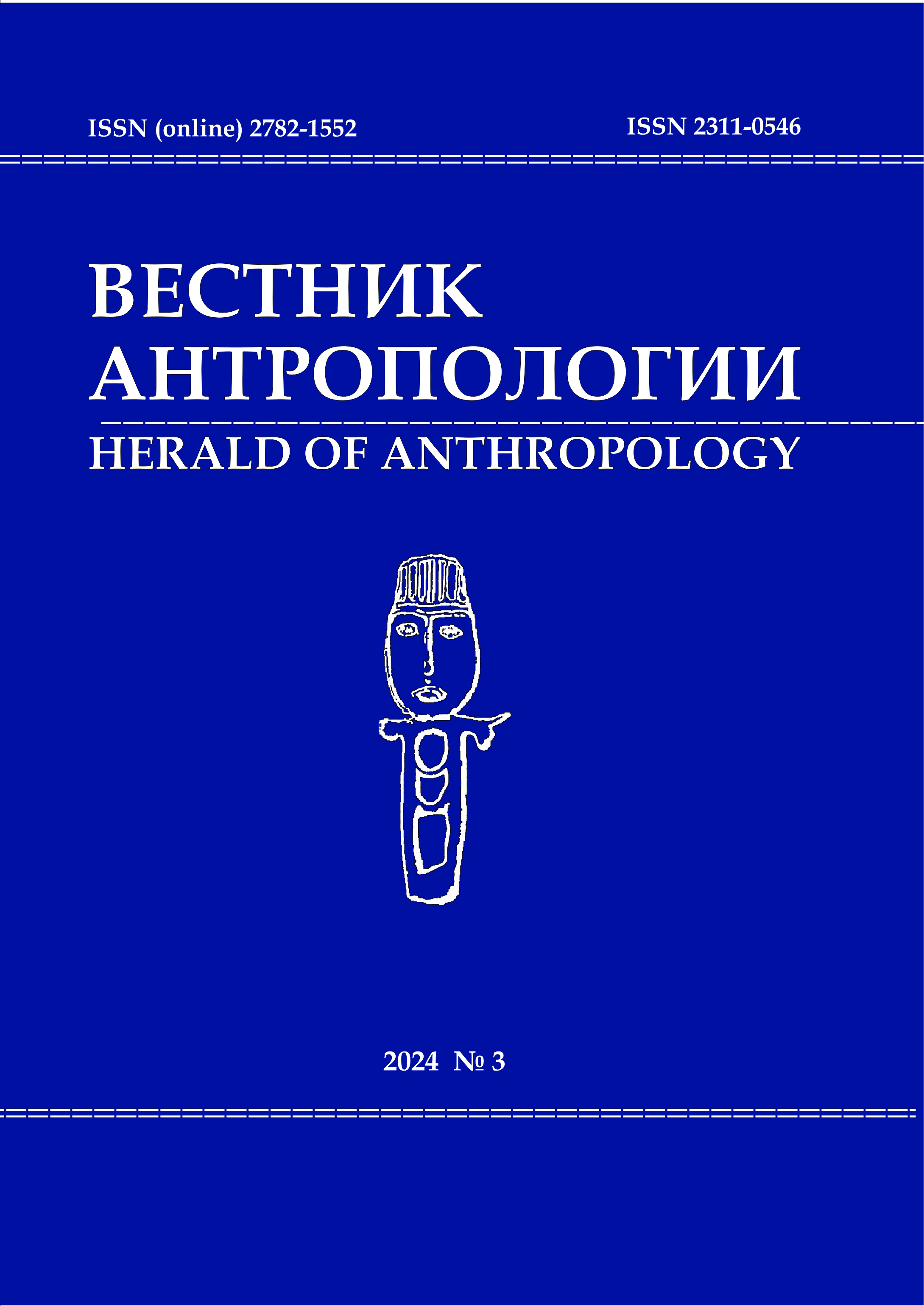The Cranial Diversity of the Modern Population of Eastern Europe
DOI: 10.33876/2311-0546/2024-3/366-390
Keywords:
craniology, craniotype, Holarctides, population of Eastern EuropeAbstract
This paper continues the extensive study of cranial samples representing modern populations worldwide. 11 traits were selected to study neurocranial shape and size. All data come from published sources and cover 6 ethnoterritorial groups: 1) Slavic (mostly Russian) samples from the East European Plain, 2) non-Slavic (mostly Finnish-speaking) samples from the same area, 3) samples from the three Baltic states (Estonia, Latvia, Lithuania), 4) Bashkir samples from the Southern Urals, 5) samples representing the indigenous population of the North Caucasus, 6) samples from Transcaucasia. Cranial analysis has assigned all these samples to several different variants of the same panecumenic craniotype called Holarctides. The Slavic and non-Slavic samples from the East European Plain proved to be particularly close in size and cranial shape. There are two epochal processes in the Holarctid craniotype: a gradual decrease in the overall size of the skull and an increase in its spherification. This is most active in places where there are rapid social processes of mixing of different ethnic groups, which always accompany the formation of state structures. The North Caucasian skull sample differs little from the Slavic and non-Slavic samples of the Eastern European Plain in the shape of the skull, but is significantly larger in size. Bashkir cranial samples have the lowest cranial vault.





















